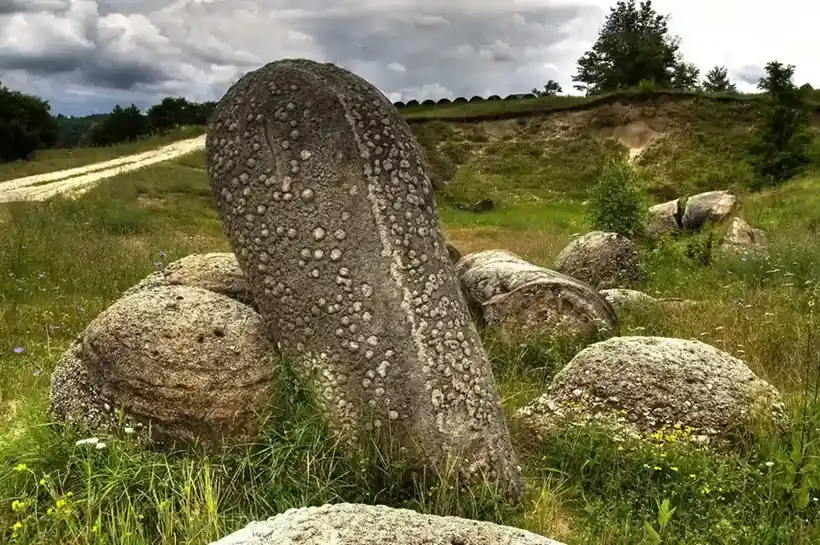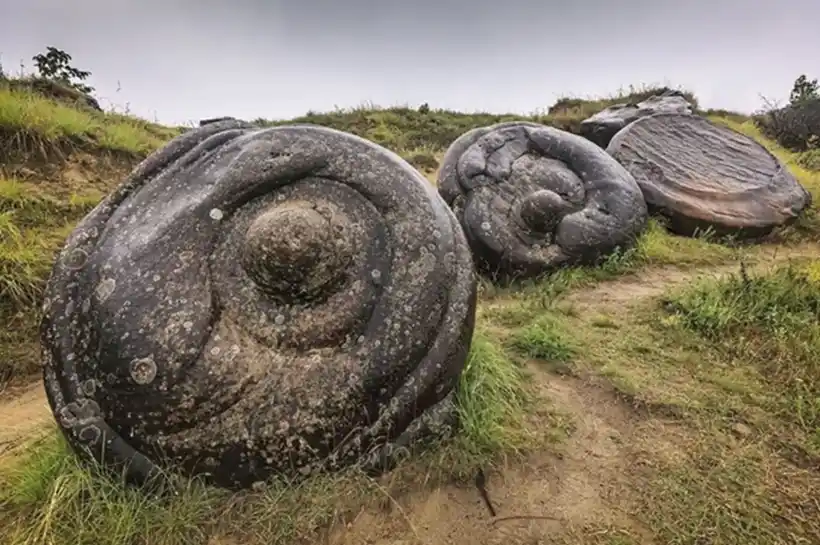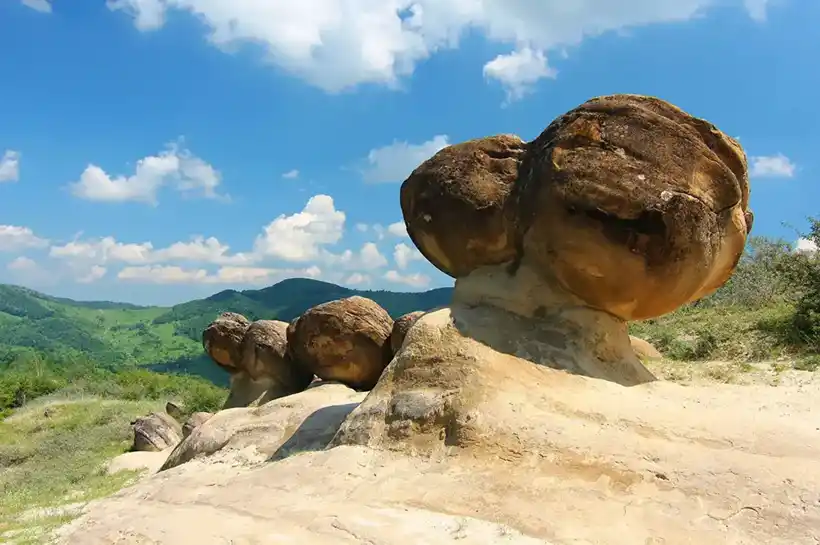
Mother Nature is full of surprises, and one of her most curious creations is the trovant. These bulbous, budging boulders are only found in a small town in Romania called Costesti. Local folklore tells of trovants are the mysterious living stones that grow, walk, and even give birth to baby trovants. Science is now starting to catch up to these legends. It turns out that trovants may be even more mysterious than we thought.
What are Trovants?

Trovants are spherical and slightly irregular-shaped rocks that are found in Romania. They can be as small as a few millimeters in diameter and weigh only a few grams. They can be as large as 15 feet (4.5 meters) in diameter and weigh several tons. Trovants have baffled observers since the 18th century. Some people believing that they are dinosaur eggs, plant fossils, or even alien pods.
These Trovants of Romania are fascinating and mysterious. These living stones thought to consist of a stone core with an outer shell of sand. After a heavy rain, people claim that the rocks produce small stone forms. That’s why some refer to them as “growing stones.” Furthermore, observers have noticed Trovants moving, resembling the sliding rocks of Death Valley.
Scientists believed trovants to be a type of concretion — a mound of mineral matter (specifically gritstone and conglomerates). They embedded within rock layers of limestone, sandstone or shale. They often form from minerals precipitating, or settling, out of water collected around a nucleus of pebble, leaf, shell, bone or fossil.
The origin of the Mysterious Living Stones

The origin of trovants is a mystery that has puzzled scientists for centuries. There have been many hypotheses, some of them even fantastical. Constantin Cobâlcescu conducted the first study of trovants in the Carpathians area in 1883. He proposed that the formation of trovants occurred through the precipitation of minerals from water. Later, Paul Koch conducted research that supported this hypothesis in 1900. In 2008, the International Geological Congress held in Oslo, concluded that trovants are not sandstone concretions. This is because there is no mineral difference between the stones and the sandstone beds on which they sit. There is also no distinct nucleus inside them.
The true origin of trovants remains a mystery. However, their unique properties and mysterious origins make them a fascinating natural phenomenon.
Scientists believe that about 6 million years ago, this area was a sea. Earthquakes during the Middle Miocene sub-epoch caused the seabed to rise, forming a sedimentation basin. The weird stones found in this area were formed in this basin and are older than humans. The surrounding sands also suggest that this area was once a marine environment. Which is why bivalve and gastropod fossils can sometimes be found in them.
These Mysterious Living Stones Can Grow and Multiply

Trovants have an interesting ability to secrete cement. This makes some people think they are living creatures. After a heavy rain, the trovants absorb minerals from the rain. These minerals react with the chemicals in the rocks, causing them to grow. Trovants can also reproduce like coral. As a new growth emerges from the parent rock, it has the potential to break off and develop into a new trovant.
Like a Rolling Stone

Some people believe that “trovants” can move on their own, much like the “sailing stones” of Death Valley. One researcher filmed trovants for two weeks and claimed to have seen one move about 1/10th of an inch. Many academics are sceptical of these claims. They don’t rule out the possibility that the heating or cooling of the soil could cause movement among the stones.
Where Can I See a Trovant?

These mysterious “living rocks” have turned the site into a popular tourist attraction in Romania’s Valcea County. These unique geological specimens are found in the sand quarry near the Costesti village. Along the Gresarea Brook, or in the neighbouring Otesani village. The Trovants Museum Natural Reserve was developed in 2004. And protect these unusual rocks, and is now a UNESCO World Heritage Site.



